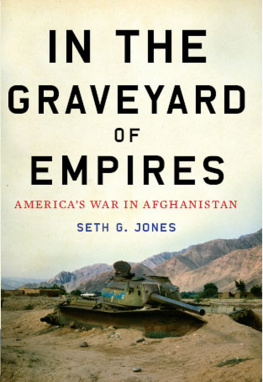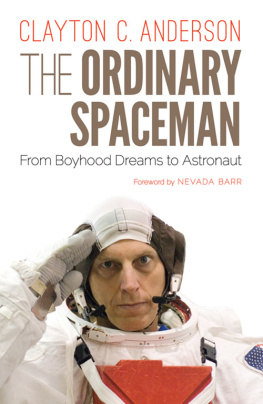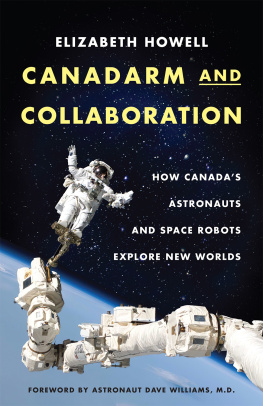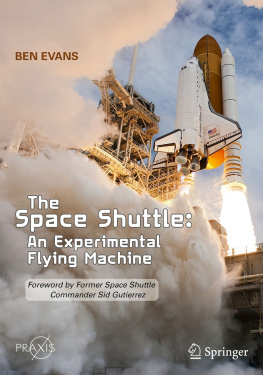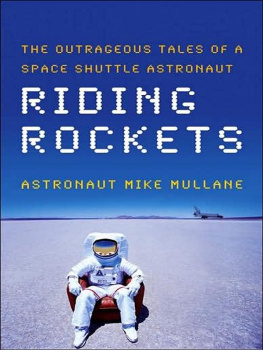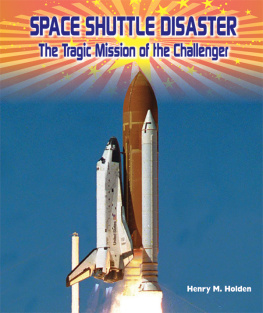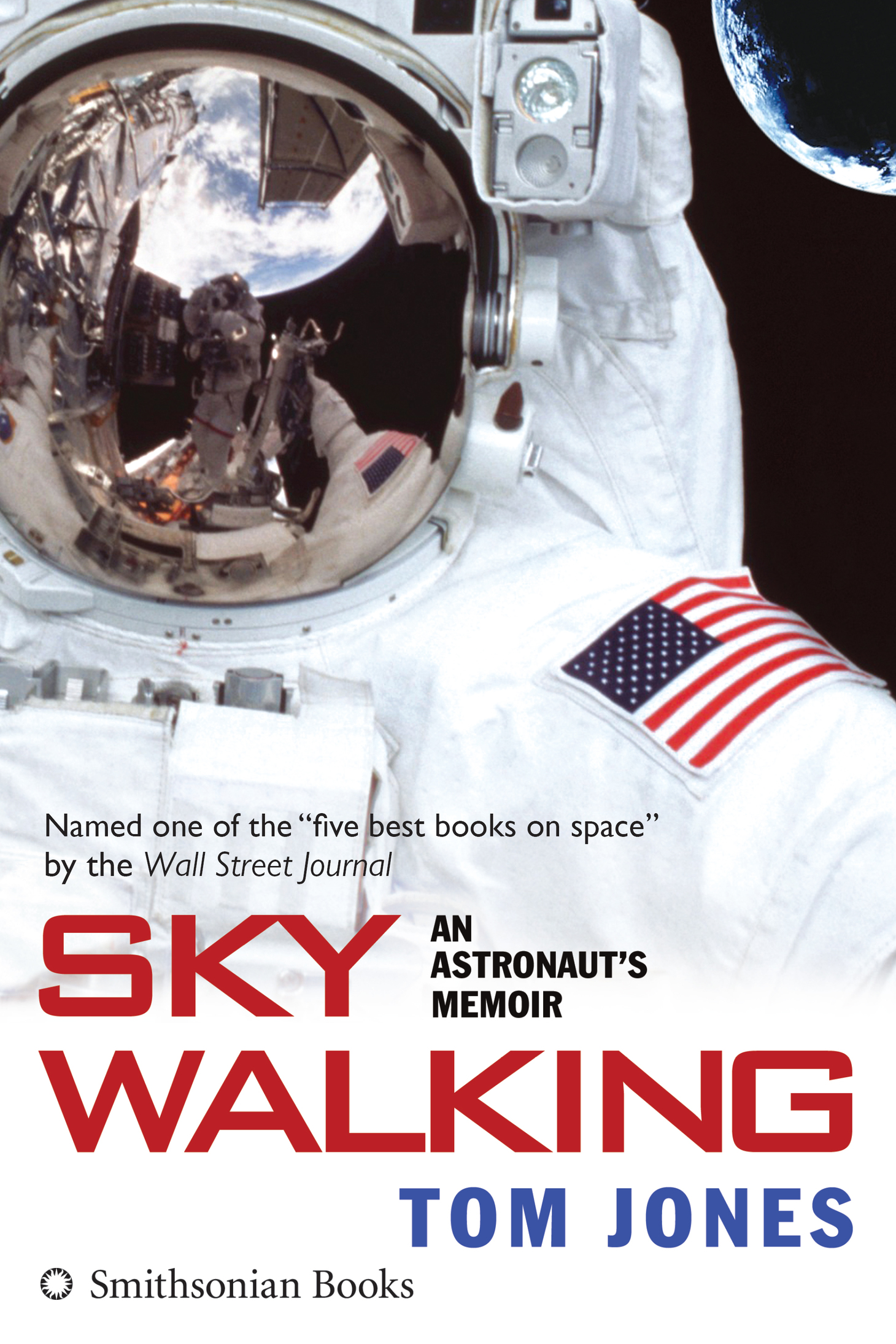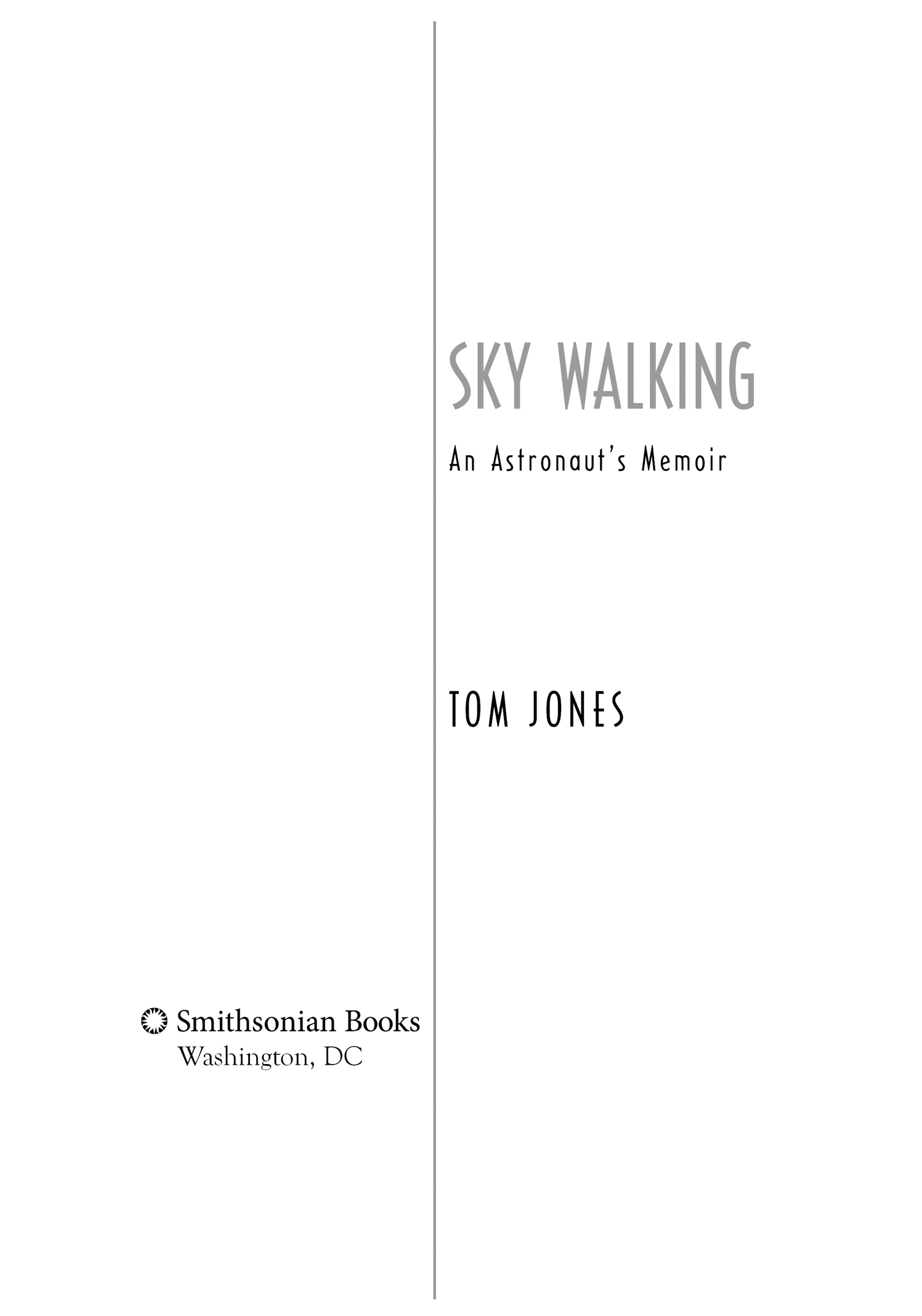Contents
Praise for SKY WALKING
Tom Jones will take you by the hand through the trials and tribulations of being a shuttle astronaut. His vision of where NASA should go in the future should be read by all serious space enthusiasts.
James A. Lovell, commander of Apollo 13
I can recommend no better read for the armchair astronaut than Sky Walking!
Homer Hickam, author of Rocket Boys
[Jones] can weave compelling tales of the experience, both technical and emotional, of space flight.
Jeff Foust, The Space Review
Pick a free day to read this book, because you will find it difficult to put down once you start.
Rich Clifford, Assembly Magazine
With humanity and passion, Jones powerfully brings to life the world of the modern NASA astronaut.
Publishers Weekly
Copyright 2006, 2016 by Thomas D. Jones.
All rights reserved. No part of this publication may be reproduced or transmitted in any form or by any means, electronic or mechanical, including photocopying, recording, or information storage or retrieval system, without permission in writing from the publishers.
First paperback edition published by Harper Collins 2007.
This Smithsonian Books edition with updated dialogue published December 2016, ISBN: 978-158834-404-5
Designed by Iva Hacker-Delaney
Library of Congress has catalogued the hardcover edition as follows:
Jones, Thomas D.
Sky walking : an astronauts memoir / Thomas D. Jones
p. cm.
Includes bibliographical references and index.
ISBN-13: 978-0-06-085152-1
eBook ISBN9781588344052
1. AstronautsUnited StatesBiography. 2. Space flights. 3. Columbia (Spacecraft) 4. Extravehicular acitivity (Manned space flight) 5. Space stations. I. Title.
TL789.85.J66.A3 2006
629.450092dc22
[B]
For permission to reproduce illustrations appearing in this book, please correspond directly with the owners of the works, as seen at the end of the figure captions. Smithsonian Books does not retain reproduction rights for these images individually, or maintain a file of addresses for sources.
v4.1
a
To the NASA family,
who brought me safely home to mine.
T he human exploration of space is one of the most important endeavors of the twenty-first century. But why do humans explore? We do so to preserve our species over the long haul. We want to expand our knowledge of our environment, to know what is out there, and to find opportunity over the horizon.
On this trip into orbit with space scientist and former astronaut Tom Jones, we learn how todays astronauts prepare for work on the frontiers of space. From the aftermath of the 1986 Challenger disaster to the loss of Columbia in 2003, Tom takes us through the astronauts training, through success and disappointment in space, and finally to the creation of one of the most promising cooperative undertakings in history, the International Space Station.
The Space Station may very well be the stepping-stone to new knowledge and new worlds. Right now it provides the best laboratory for performing experiments in zero gravity to ensure that humans can be fit and productive after long-duration trips in deep space. Should research prove that zero gravitys effects are too worrisome for extended journeys, we can use the station to test, for example, a promising concept for generating artificial gravity, called a human rotation bicycle. This astronaut-powered centrifuge could easily be fitted into one of the inflatable habitats now being developed commercially. As the rider pedals, he or she would power the bike in a tight circle, effectively creating a small-diameter centrifuge and applying a gravitational acceleration that increases with speed. Humans, who adapt readily and well to zero gravity, will likely have no problems whirling themselves around on a bike, just as pilots adapt to high rates of roll in fighter or attack aircraft. In this and other experiments, the Space Station that Tom Jones helped build can be a problem-solving laboratory that gets us on the way to the planets.
The Space Stations unique zero-gravity environment makes possible scientific research that offers great promise for us Earth people. Promising results from Columbias last mission suggest that a space bioreactor may enable us to study growing cancer tumors or cultivate human body tissues such as heart muscle for transplant use. Small improvements gained through space research in the combustion efficiency of automobile and jet engines will save enormous amounts of fossil fuels back on Earth. Investigations into small, weightless flames on the shuttle have already given us new insight into combustion physics that should lead to the development of cleaner, more fuel-efficient engines. Learning how to grow plants efficiently in space will be vital for getting us to the Moon and Mars. Using hydroponic farming, elevated carbon dioxide levels, and intensified light, we have grown wheat in laboratories on Earth yielding more than 1,000 bushels an acre. Perfecting those techniques in space on the station should reduce the amount of food well need to launch from Earth and improve our agricultural practices on Earth, too.
Earth observation from the Space Station is just one way that NASA is improving the understanding of our own planet. Toms first two missions with the Space Radar Laboratory furnish a good example. In 2000 the same shuttle-based radars produced a digital three-dimensional map of 80 percent of Earths terrain. Already in use by the US military, this global data set will eventually be used in aircraft cockpits to help eliminate one of the main causes of aviation accidents: controlled flight into terrain. Future space-based radars will use the techniques explored on Toms missions to monitor earthquake zones and active volcanoes for the telltale motions that signal an impending tremor or eruption. If we can predict these disasters worldwide, we can get folks evacuated in time to save thousands of lives.
Ive known since before flying on Gemini 3 that working out there in space is risky business, but at stake is humanitys survival down here on planet Earth. Looking back at Earth from the Moon, I saw how our world is unique in this vast universe. The space technologies we must develop to explore the Moon, Mars, and the rest of the solar system are the same tools that will protect our planet when the unexpected inevitably happens; catastrophes such as asteroid or comet impacts and the eruption of supervolcanoes can threaten our very civilization. In this book, Tom discusses how visits to asteroids on the way to the Moon and Mars will give us the means to deal with one of these threats. The more technology we have in hand to prevent or cope with such hazards, the better our chances for survival as a species.



